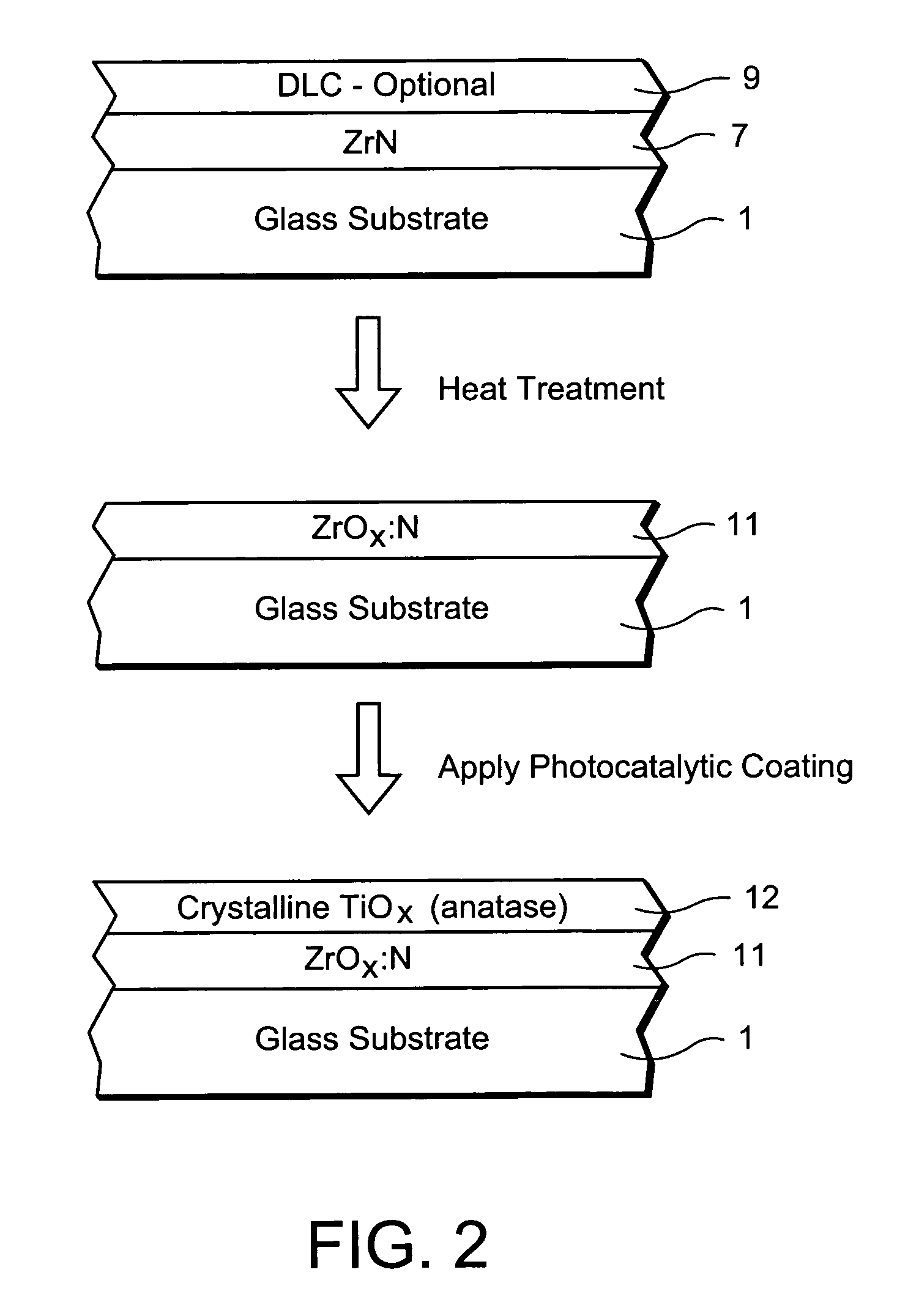Photocatalytic window and method of making same
a photocatalytic window and photocatalytic window technology, applied in the field of photocatalytic window and method of making same, can solve the problems of dlc as a protective overcoat not being able to withstand heat treatment (ht), dlc cannot be used alone as a coating to be heat treated, and dlc tends to oxidize and burn off, so as to increase the visible transmission of the coated article
- Summary
- Abstract
- Description
- Claims
- Application Information
AI Technical Summary
Benefits of technology
Problems solved by technology
Method used
Image
Examples
Embodiment Construction
[0032]Referring now more particularly to the accompanying drawings in which like reference numerals indicate like parts or layers throughout the several views.
[0033]In certain example embodiments of this invention, there is provided a method of making a coated article (e.g., window such as for a vehicle, building, shower door, or the like) that is capable of being heat treated so that after being heat treated (HT) the coated article is scratch resistant to an extent more than uncoated glass. Moreover, certain example embodiments of this invention relate to a window having anti-fungal / anti-bacterial properties and / or self-cleaning properties, and a method of making the same. Coated articles according to certain example embodiments of this invention may be used in the context of shower door windows, architectural windows, vehicle windows, IG window units, picture frame windows, or the like. While coated articles according to this invention are particularly adapted for use in windows, ...
PUM
| Property | Measurement | Unit |
|---|---|---|
| refractive index | aaaaa | aaaaa |
| refractive index | aaaaa | aaaaa |
| refractive index | aaaaa | aaaaa |
Abstract
Description
Claims
Application Information
 Login to View More
Login to View More - R&D
- Intellectual Property
- Life Sciences
- Materials
- Tech Scout
- Unparalleled Data Quality
- Higher Quality Content
- 60% Fewer Hallucinations
Browse by: Latest US Patents, China's latest patents, Technical Efficacy Thesaurus, Application Domain, Technology Topic, Popular Technical Reports.
© 2025 PatSnap. All rights reserved.Legal|Privacy policy|Modern Slavery Act Transparency Statement|Sitemap|About US| Contact US: help@patsnap.com



